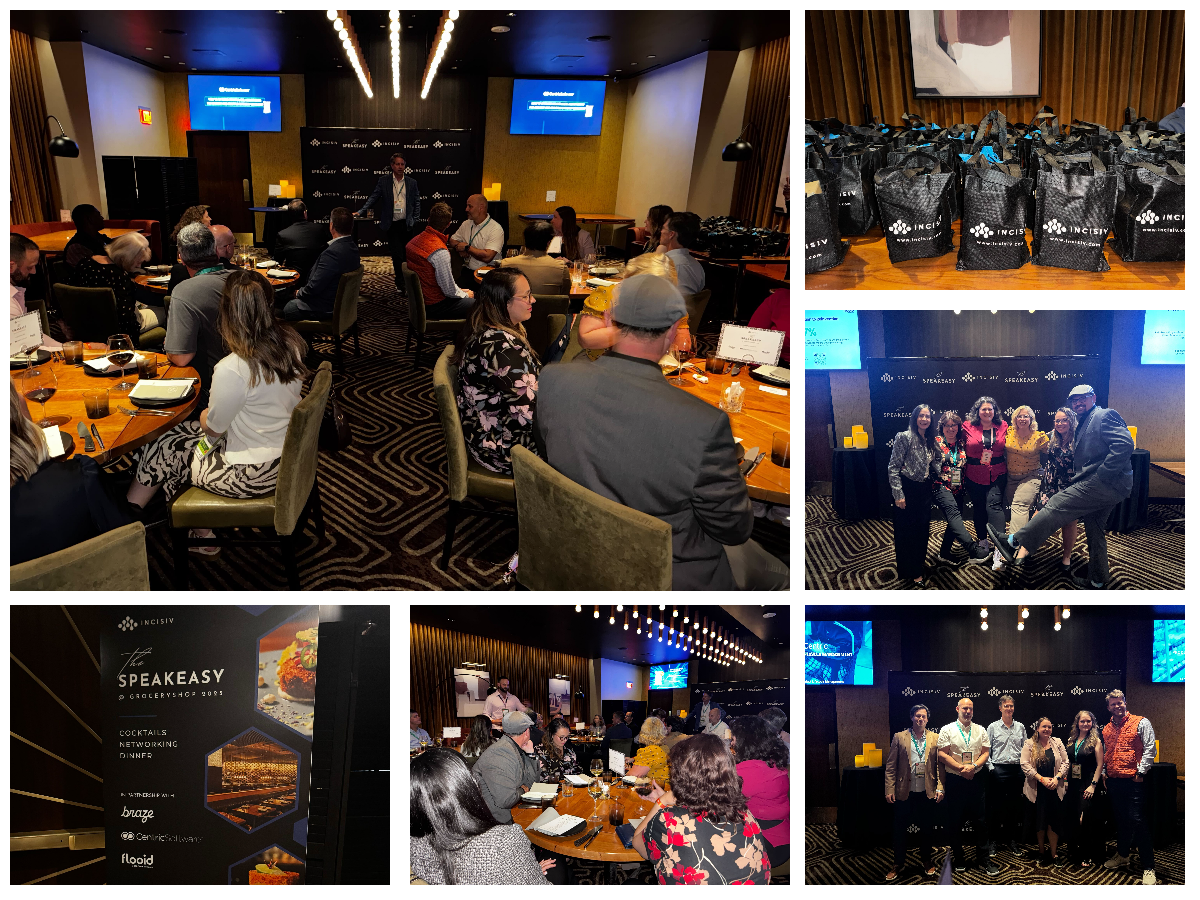Executive Summary
Groceryshop 2025 highlighted how grocers, CPGs, and tech providers are rethinking growth in an era defined by economic pressure, shifting consumer expectations, and rapid technological advancement. While challenges such as tariffs, inflation, and cost pressures remain, the event underscored that opportunities lie in redefining value, leveraging digital and AI capabilities, and reframing the role of the store.
Key Themes:
- Value remains the universal driver across markets.
- Convenience is non-negotiable for shoppers.
- AI and automation are moving from experimentation to scaled execution.
- Omnichannel strategies continue to outperform.
- Retail Media Networks (RMN) are entering a new era of growth.
- The grocery store remains central, but its role is evolving into a hub of services, discovery, and digital activation.
Top Trends from Groceryshop 2025
Defining Growth in Grocery
Growth vs. Inflation: A central question was whether current gains represent true growth or inflationary lift. Retailers emphasized the need to invest in fundamentals before chasing expansion.
Core Priorities:
Invest in the core business before pursuing adjacencies.
Right tech, right place—commercially viable, customer-convenient technologies matter most.
Assortment relevance and store location remain critical levers.
Growth vs. Inflation: A central question was whether current gains represent true growth or inflationary lift. Retailers emphasized the need to invest in fundamentals before chasing expansion.
Flywheel Effect: Without a growth engine—services, assortment, digital touchpoints—momentum will be lost.
The Shopper Redefined
Value First: Shoppers across geographies are scrutinizing spend, with consistent demand for quality and affordability. Private label plays a growing role in delivering that.
Health & Wellness: Consumers are gravitating toward high-protein, organic, and fresh options—accelerated by GLP-1 adoption. Grocers are reconfiguring store footprints to reflect this.
Convenience as Currency: Shoppers expect grocers to “be in the moment”—from lunch breaks to TikTok trends. Convenience, not loyalty to a brand, drives choice.
Digital & Omnichannel Evolution
Omnichannel Advantage: 70% of grocery sales are influenced by omni interactions. Omni shoppers spend 1.5x more than single-channel ones. Walmart’s omni-first focus is setting the benchmark.
Convenience Tech: Dark stores, robotic picking, farm-to-fork transparency, and “inverse pyramid” fulfillment models are reshaping online grocery economics.
Loyalty & Retention: Retention is the new growth. Grocers must reduce CAC by leveraging every channel where customers are (apps, retail media, social commerce).
Retail Media Networks (RMN)
Emerging Opportunity: RMN is rapidly becoming a core growth lever. Grocers’ digital real estate (apps, websites) remains under-monetized.
Talent Gap: Success requires talent with RMN expertise—different from brand marketing.
Full-Funnel Shift: Retail media in grocery is moving from trade-spend conversion to true full-funnel activation, both in-store and online.
The Store as Growth Engine
Store-Centric Growth: As Ben Miller, VP, Original Content & Strategy, Shoptalk & Groceryshop put it best, “It’s all about the store, stupid.” Physical stores remain at the heart of e-commerce growth.
First 90 feet / Last 90 seconds: Cleanliness, in-stock positions, and fresh assortments matter more than ever, as well as seamless checkout.
Evolving Store Models: Stores are becoming hubs for discovery and services, from in-store foraging experiences to health-driven assortments.
Fresh as Differentiator: Fresh produce is the most demanding shopper expectation and a key battleground for differentiation.
AI & Automation in Practice
Scaling Use Cases: AI has matured from supply chain optimization to new applications in checkout, marketing, assortment, and personalization.
Agentic AI: Moving beyond hype, agentic systems are reshaping search, associate workflows, and shopper engagement. Walmart’s four “super agents” (Customers, Associates, Partners, Developers) exemplify scalable frameworks.
Practical Gains:
Demand forecasting with minimal human waste.
Robotic inventory and computer vision improving accuracy.
AI-assisted product innovation (e.g., Colgate digital twins for consumer testing).
Future Outlook: AI will enable tighter human-machine collaboration internally and hyper-personalized customer experiences externally.
Efficiency & Scale
Efficiency Mandate: Grocers must simplify, speed up, and reinvest savings. Field insights and cross-team collaboration drive smarter decision-making.
Global vs. Local: “Global where possible, local where necessary.” Distribution density and local real estate remain critical to fresh performance.
Supply Chain Investment: Large production facilities and expanded distribution centers are mitigating risks and enabling fresh-led growth.
Emerging Insights
BNPL for Fresh: Executives noted surprising usage of BNPL for fresh categories.
E-commerce Profitability Debate: While some argued e-grocery will be more profitable than traditional grocery, many remain unconvinced.
Talent Tension: 41% of Gen Z employees will quit if tools and tech are poor—adoption and usability are as critical as innovation.
Consumer Shifts: GLP-1 treatments are directly changing where 46% of shoppers choose to shop.
Conclusion
Groceryshop 2025 confirmed that grocery is at an inflection point. Growth is no longer just about store count or basket size—it is about creating ecosystems that deliver value, convenience, efficiency, and trust. Grocers who align core execution with smart digital integration, customer-centric innovation, and efficient scaling will define the next era of grocery retail.





